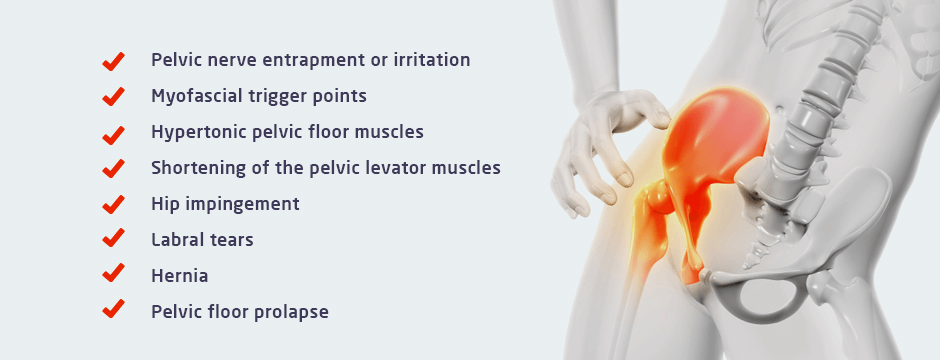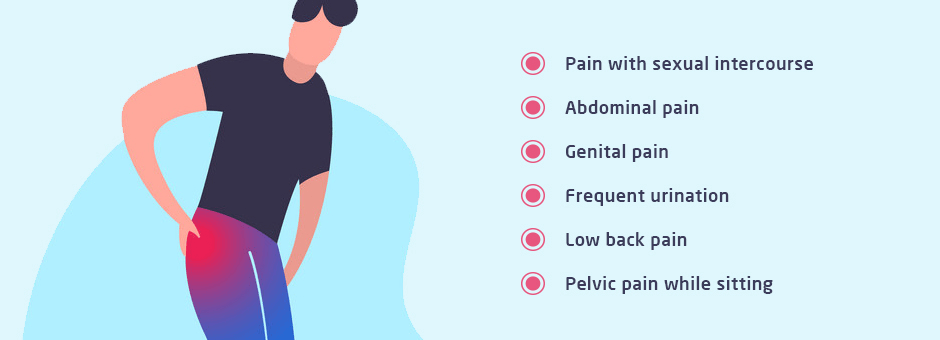Many athletes of all ages and skill levels rely on physical therapy and chiropractic care to enhance and maintain optimal performance. With recent reductions in team practices, games and competitions, it is more important than ever to find innovative and effective ways to stay in top shape and hang onto your competitive edge. TeleHealth online physical therapy services offer an effective solution for periods of reduced activity, giving you the training and advice you need to stay at the top of your game.
The structures of the pelvic region are complex, and many things can contribute to CPPS. Some of the most common causes include:
- Pelvic nerve entrapment or irritation
- Myofascial trigger points
- Hypertonic pelvic floor muscles
- Shortening of the pelvic levator muscles
- Hip impingement
- Labral tears
- Hernia
- Pelvic floor prolapse
- Diastasis recti
CPPS can be intensified by other conditions, including:
Pelvic floor pain can range from mild to severe. Symptoms may include:
- Pain with sexual intercourse
- Abdominal pain
- Genital pain
- Frequent urination
- Low back pain
- Pelvic pain while sitting
In addition, CPPS patients often report psychological distress, anxiety and depression. Chronic pelvic pain can indicate other serious conditions, and therefore should not be ignored.
Myofascial physical therapy (MPT) involves hands-on techniques performed by a trained MPT specialist that target soft tissues like muscles and fascia. Fascia is a thin tough web of connective tissue that surrounds and connects muscles, bones, nerves, blood vessels, and organs throughout the body. Fascia tissue can become tight, and may form trigger points, tiny spasmodic nodules that can cause pain in neighboring tissues.
MPT involves specific manual maneuvers to help relax and elongate tight tissues. MPT may include stretching and massage, along with the release of trigger points. As an adjunct to myofascial physical therapy, CPPS symptoms like low back pain can be successfully treated by a chiropractor.
A 2019 longitudinal study by Grinberg et al. compared 39 female patients with CPPS who received MPT treatment, to 11 female CPPS patients who went untreated. The study concluded that MPT could be recommended as an effective mechanism-based treatment for patients suffering from CPPS.
he pelvic pain specialists at NYDNRehab use high resolution diagnostic ultrasonography to visualize the structures of the pelvis to identify the true cause of pelvic pain and discomfort, and rule out more serious conditions.
Once we accurately diagnose CPPS, we proceed with an individualized treatment plan for every patient. Our treatment protocol may include:
In addition to in-person therapy sessions, NYDNRehab now offers TeleHealth services, so you can meet with your therapist online to treat and manage CPPS remotely, from the privacy and convenience of your home, office or hotel room.
Resource:
Grinberg, Keren, et al. “How Does Myofascial Physical Therapy Attenuate Pain in Chronic Pelvic Pain Syndrome?.” Pain Research and Management 2019 (2019).


























































